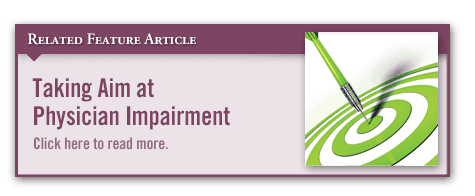Every winter when cold and flu season hits, millions of people take non-steroidal anti-inflammatory drugs (NSAIDs) like ibuprofen and naproxen to ease the aches and pains associated with being sick. In addition, about 23 million Americans use over-the-counter NSAIDs every day. There were also close to 98 million prescriptions for NSAIDs filled last year, making them one of the most commonly prescribed medication classes in the United States.
Addressing AEs
Like all medications, NSAIDs can cause adverse events (AEs), particularly when they are used inappropriately. Both selective and nonselective NSAIDs can cause significant and even life-threatening events, including gastrointestinal, renal, and cardiovascular AEs. It’s important to counsel patients about appropriate use of NSAIDs. The FDA recommends using NSAIDs at the lowest effective dose for the shortest period of time required to provide therapeutic effect.
The incidence of NSAID-related AEs increases significantly with concurrent use of multiple NSAID products and higher doses and longer duration of use. Many patients knowingly use prescription and OTC NSAIDs at the same time, increasing their risk of AEs. However, many more likely do so unknowingly because they’re unfamiliar with the term NSAID and don’t know which products are NSAIDs. Many patients are also unaware that some cold and pain medications contain NSAIDs that are combined with antihistamines, decongestants, or other analgesics, which can lead to using multiple NSAID products at the same time. A lack of patient awareness about NSAIDs—combined with the availability of OTC NSAID products—complicates their appropriate use.
Ensuring Proper Use
There are several steps physicians can take to ensure appropriate NSAID use. A thorough medication review at each patient visit, including both OTC and prescription products, provides an opportunity to educate patients about what medications are NSAIDs and how to appropriately use them. This can prevent them from combining NSAID products. Patients should also be educated about where to find NSAID information on the packaging of OTC products. Additionally, a pain assessment at each visit can help ensure that NSAID dose and duration are guided by therapeutic need.
Talking with patients about NSAIDs can bring up other issues. Some may be worried about negative stories they’ve heard about opioids and acetaminophen. The fear of AEs with these medications or with NSAIDs may cause patients to allow pain to go untreated. This can diminish quality of life, reduce functionality, and worsen their condition.
We must educate our patients and facilitate an ongoing dialogue about what medications they may be taking. As providers, we need to take into account their clinical needs and risk factors and help them understand the benefits and risks of NSAIDs. This can ensure they’re following guidance for use and maximizing the therapeutic benefits while minimizing the likelihood of AEs.




 admin
admin